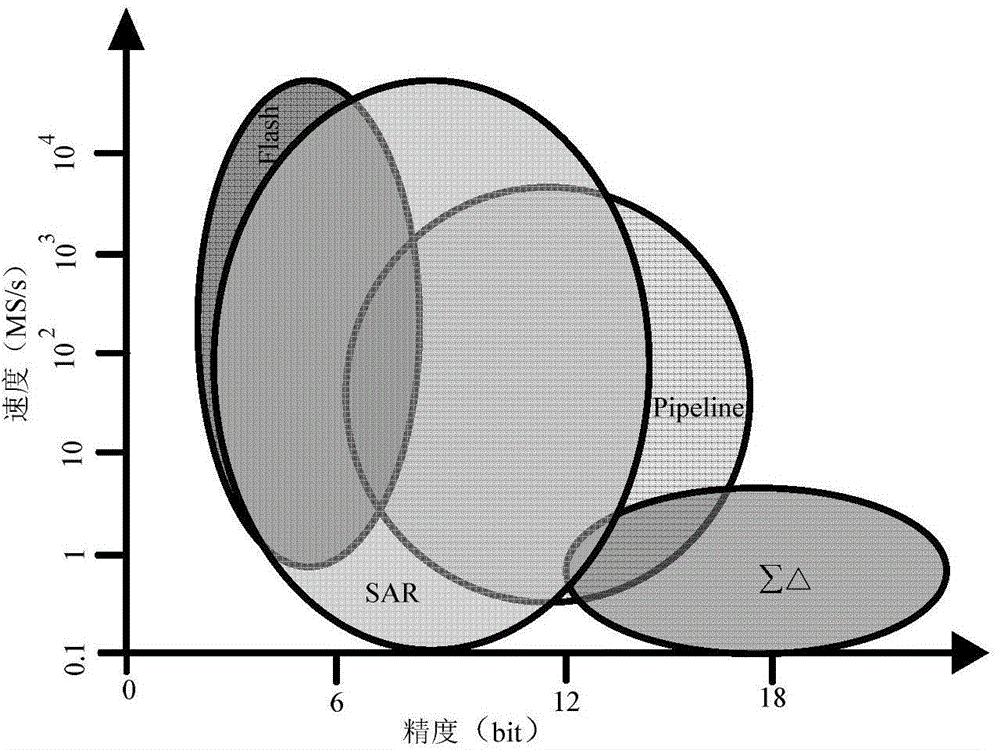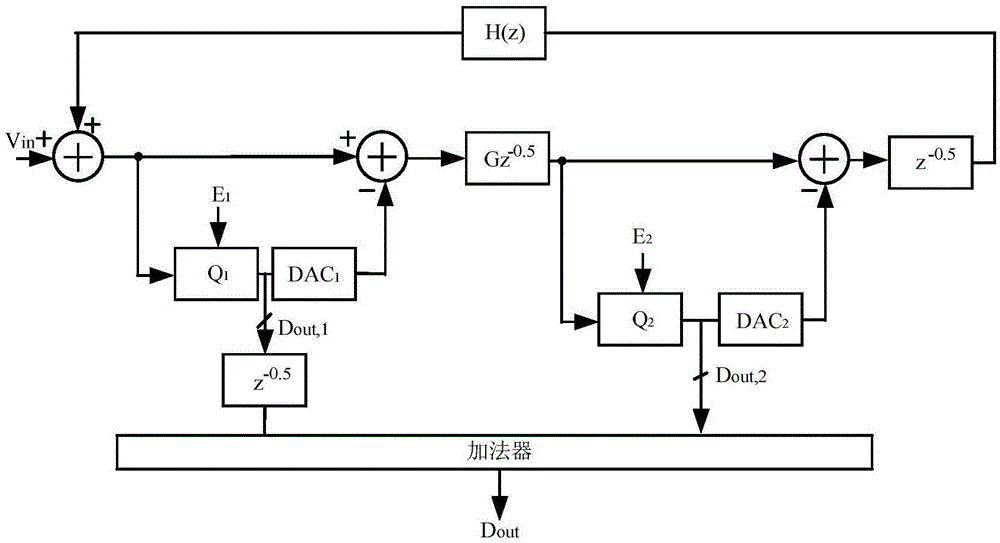Noise-shaping flash successive approximation register analog-to-digital converter (Noise-Shaping Flash-SAR ADC)
An analog-to-digital converter and successive approximation technology, applied in the direction of analog/digital conversion, code conversion, instruments, etc., can solve the problems of increasing timing complexity, limiting the application of Flash-SARADC, and the number of FlashADC comparators. The effect of small complexity, good linearity and high precision
- Summary
- Abstract
- Description
- Claims
- Application Information
AI Technical Summary
Problems solved by technology
Method used
Image
Examples
Embodiment Construction
[0016] The present invention eliminates the quantization noise Q of the pre-stage Flash ADC by constructing a system transfer function 1 , and the subsequent quantization noise Q 2 Perform first-order noise shaping, the derivation process is as follows:
[0017] D. out,1 =V in +Q 1 -Q 2 (1)
[0018] D. out,2 =Q 2 -z -1 Q 1 (2)
[0019] D. out =D out,1 z -1 +D out,2 (3)
[0020] Substituting the above formulas (1) and (2) into formula (3), the system transfer function can be obtained as:
[0021] D. out =V in z -1 +Q 2 (1-z -1 ) (4)
[0022] It can be seen that the quantization noise Q of the pre-stage Flash ADC 1 is eliminated, the quantization noise Q of the subsequent SAR ADC 2 After first-order noise shaping, the noise transfer function is 1-z -1, and the input signal Vin only goes through a delay, and the signal transfer function is z -1 , that is, the signal and noise have different transfer functions. Such as image 3 Shown: For the unifo...
PUM
 Login to View More
Login to View More Abstract
Description
Claims
Application Information
 Login to View More
Login to View More - R&D
- Intellectual Property
- Life Sciences
- Materials
- Tech Scout
- Unparalleled Data Quality
- Higher Quality Content
- 60% Fewer Hallucinations
Browse by: Latest US Patents, China's latest patents, Technical Efficacy Thesaurus, Application Domain, Technology Topic, Popular Technical Reports.
© 2025 PatSnap. All rights reserved.Legal|Privacy policy|Modern Slavery Act Transparency Statement|Sitemap|About US| Contact US: help@patsnap.com



